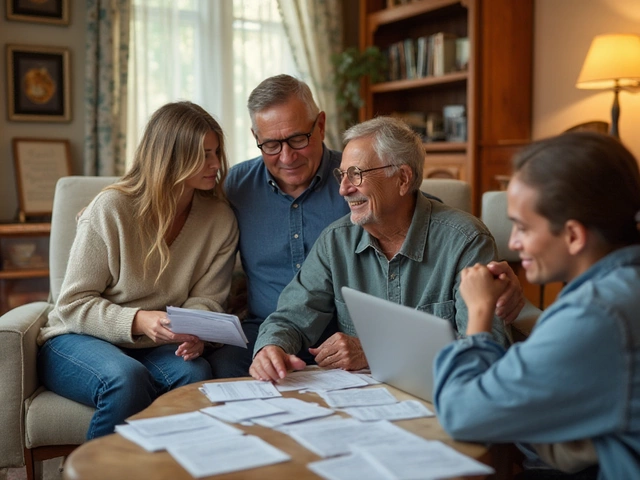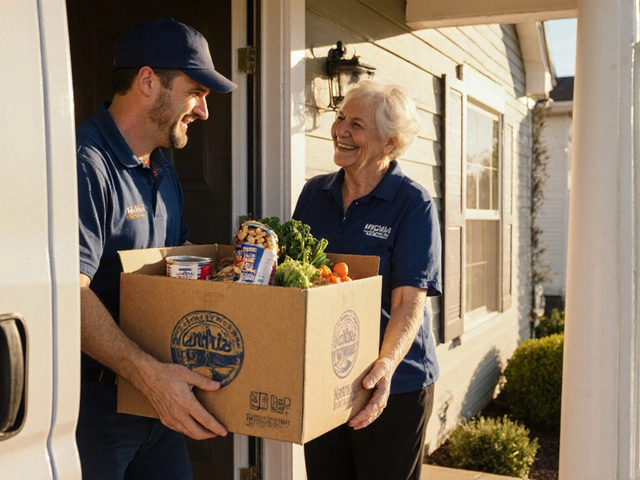Imagine shaping a neighborhood’s future and being the spark behind real on-the-ground change, but without an office in city hall or a name on the ballot. That’s exactly what a community outreach leader does—except their podium is the community center, their policies come from face-to-face talks, and their victories are measured in smiles, full food pantries, and safe parks instead of votes. Year after year, studies from organizations like the Pew Research Center report that trust in local leaders, especially those who aren’t politicians, can be surprisingly high—especially when these leaders are present, accessible, and get things done.
And let’s be honest, ‘community outreach leader’ sounds a bit fuzzy if you’ve never worked with one. So, what’s really happening behind the scenes? The honest truth: it’s as much about hard skills as it is about heart, hustle, and a willingness to roll up your sleeves anytime things get tough.
The Heartbeat Of Outreach: Day-to-Day Duties And Big-Picture Goals
The wild part about being a community outreach leader is that no two days ever look the same. Sure, there are recurring responsibilities—creating partnerships, meeting families, organizing events—but the magic is in the little details that happen in between. These leaders act like the glue that holds everything together, balancing strategy with empathy on a daily basis.
A large part of their day is about building genuine connections. A 2022 VolunteerMatch survey found that 68% of volunteers cited a strong, relatable leader as the main reason they kept coming back. Outreach leaders know how to make people feel seen and appreciated, not just like names on a sign-up sheet. This means hosting listening sessions in a church basement, meeting parents after work hours, or even knocking on doors to ask what resources are really needed.
When it comes to planning, these leaders never just ‘set it and forget it.’ They track what’s working—sometimes with something as simple as tallying up new faces at an event, or as detailed as using digital tools like Airtable or Trello for collaboration and reporting. For more established outreach programs, monthly or quarterly check-ins are the norm, and real-time feedback is valued above pretty presentations. For example, Seattle’s Department of Neighborhoods started publishing online dashboards to show how community grant funds are being used, fostering transparency and trust.
Event planning is another beast. Outreach leaders need all the skills of a logistics manager and all the creativity of a party planner. They partner with local businesses for donations (think: pizza from a family-owned shop for youth nights), recruit volunteers, handle RSVPs, and advertise with flyers or social media posts. On the day itself, they might haul folding chairs at sunrise, greet nervous newcomers, and solve tech issues—all before lunch.
But it’s not all face time and high-fives. Leaders must document their work, providing reports for sponsors, tracking outcomes, and keeping compliance with any relevant regulations. Grant applications can be seriously intimidating; a recent Foundation Center study showed that smaller nonprofits led by outreach pros spend an average 20 hours per grant. Attention to detail, paperwork, and deadlines are a real part of the job.
The best community outreach leaders also challenge their own assumptions, looking out for voices that rarely make it to the table. They create spaces for teens, immigrants, or marginalized groups to share ideas—even when those ideas make things ‘messy.’ Striking the balance between community input and organizational mission is one of the toughest parts of the role, but it’s critical for making change stick.
So, what makes all these moving parts possible? Communication skills border on superpower status here. Outreach leaders need to create welcoming environments, settle conflicts before they snowball, and translate organizational jargon into everyday language. Patience, humor, and genuine curiosity are their secret weapons.
It’s not just talk, though. The impact adds up. Check out some recent numbers from national nonprofits:
| Year | People Engaged | Programs Launched | Communities Served |
|---|---|---|---|
| 2022 | 15,000+ | 120 | 37 |
| 2023 | 19,500+ | 158 | 42 |
| 2024 | 22,800+ | 200 | 49 |
Numbers can only say so much, but if you want to understand outreach, look at how those numbers show growth, trust, and success spread across neighborhoods.

Key Skills And Qualities: What Makes A Standout Community Outreach Leader?
People don’t step into this role with every skill perfected—but if you look at those who flourish, a certain toolkit shows up again and again. If you’re wondering what it takes (or whether you’ve got what it takes), here’s where the rubber meets the road.
Let’s start with leadership that looks more like mentorship. Outreach leaders aren’t barking orders—they’re inspiring action. They spot talent in a shy volunteer. They help parents see themselves as change-makers, not just “recipients.” In fact, the strongest indicator of program success is often how many new leaders an outreach leader helps grow.
Empathy is the real MVP here. You can’t fake concern for a family struggling with housing or a teen who’s skipped three school lunches because money’s tight. Good leaders listen—really listen—and respond with resources, introductions, or practical ideas, not just pep talks. When the CDC’s Community Guide explored effective outreach in public health, they found that programs led with empathy retained up to 40% more participants.
Flexibility is everything. Sometimes a carefully planned event gets rained out or a partner organization flake at the last minute. A great leader rolls with it, swapping picnic tables for gym bleachers or calling in backup volunteers with a group text. They see these challenges as speed bumps, not stop signs.
Let’s talk about communication. It’s not just about writing emails or speaking in public (though those matter). Great outreach leaders understand their audience’s culture, language, and humor. They use photos, stories, and real-time updates—think WhatsApp groups or Instagram stories over a stale newsletter. They also know how to say 'no' kindly, and set clear boundaries to avoid burnout (their own and their team’s).
Organization is another silent superpower. Calendars, lists, reminders, backup plans—if you open an outreach leader’s planner, you’ll see color-coded chaos. This is what keeps programs running on time, donors happy, and communities feeling seen. If you’re a ‘list person,’ you will thrive in outreach.
Then there’s networking. No outreach leader works solo. They know who to call when the food bank runs low, or which local business would lend a sound system for free. Building (and keeping) good relationships with everyone from school principals to small business owners to city officials means the right doors open at the right time.
Problem-solving is at the heart of the role. Most days, something will go sideways: the guest speaker no-shows, funding falls through, or the community’s priorities suddenly shift. Leaders who stay calm, ask for input, and adapt their approach keep programs alive and growing.
Here are some practical tips anyone can use to sharpen these key skills:
- Practice active listening. Put the phone away in meetings and repeat back what you’ve heard to avoid miscommunication.
- Use digital tools (like Google Workspace or Zoom) for easy document sharing and check-ins, especially for remote teams.
- Learn to tell stories—personal success stories inspire both donors and volunteers.
- Keep a “backup list” of trustworthy contacts who can fill roles or donate on short notice.
- Block time for self-care—rest makes leaders more creative and resilient.
- Regularly ask for feedback, not just from team members, but from the community itself.
Even if you don’t have formal leadership training, these everyday skills can make you stand out. And don’t forget—the best outreach leaders are always learning. They attend workshops, read the latest research, and aren’t afraid to try something new if it might help their community.

The Ripple Effect: Outreach Leadership In Action And Ways To Step Up
Here’s the thing about community outreach leaders: their impact ripples out and inspires others—way beyond anything you see on paper. It’s not just about hosting food drives or afterschool tutoring; it’s creating space for people to connect and trust one another, no matter their background or struggles. Long-term research from the National Council of Nonprofits points out that neighborhoods with active outreach leaders report higher volunteer rates, more civic engagement, and a greater sense of safety.
Want to see these ripples up close? Take a look at how outreach leaders jumpstart dormant programs. Maybe there’s a public park everyone avoids—until a leader organizes regular cleanup days, partners with a local artist for a mural project, and rallies the neighborhood into action. Within months, the park isn’t just cleaner. It’s alive, safe, and a hub for block parties and community meetings.
Big emergencies call on this role more than ever. After a storm, outreach leaders check on seniors who might be isolated, coordinate rides to shelters, or distribute water and food—faster than any city agency ever could. During the COVID-19 pandemic, grassroots outreach groups often reached vulnerable residents with masks and info far quicker than bigger nonprofits, thanks to their connections and trust.
Some leaders get creative by launching brand-new programs. Maybe they spot a need for STEM classes for girls, or counseling for new parents. It usually starts with small surveys, a handful of determined partners, and Facebook posts that reach hundreds locally. They write grants, organize fundraisers, and set benchmarks so they know if their efforts work. According to Giving USA, programs started by strong local leaders have a 30% higher one-year retention rate than those managed centrally by large organizations—real proof that leadership at the ground level matters most.
What if you want to step up? Start by joining neighborhood association meetings, volunteering at local events, or shadowing an existing leader. Most outreach leaders are happy to mentor newcomers; they get that fresh energy is the fastest way a movement grows. Look for training at local libraries, nonprofit collaboratives, or even free online classes—there’s no one-size-fits-all credential for this work.
By now, you’ve seen how this job is more than a title—it’s a mindset. Outreach leaders know how to light the first spark and keep the fire burning through setbacks, changes, and quiet victories few others notice. They aren’t born; they’re built, piece by piece, through showing up, listening, making mistakes, and always coming back for more.
The next time you see a well-run neighborhood event or a thriving local program, there’s a good chance a community outreach leader is behind it—smiling, hustling, and probably already dreaming up the next ripple.






